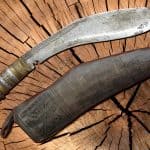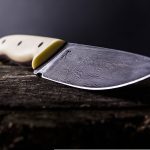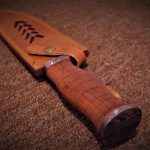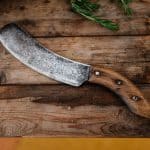
Introduction
Sharpening knives with a bench grinder is one of the best and most efficient ways to keep your kitchen knives in good shape. Not only does it make for a quicker job, but it can also extend the life of a blade far longer than hand-sharpening. The choice of bench grinders for knife sharpening may seem overwhelming at first, but by understanding what to look for and the different types available, you can easily find the perfect option that meets your needs.
When selecting a bench grinder for knife sharpening, you should consider three key points: power/energy rating, speed range and features. These can be broken down further into more specific criteria such as wheel size, motor size and noise level. Power wise, the higher wattage (measured in watts) the more power available and hence better performance when sharpening your knives. Speed wise, there should be at least two speed settings; low speed meant for honing and high speed to quickly sharpen blades. Look out also for features such as variable speeds with multiple disc options which lets you adjust the speed depending on whether you require fine finishing or coarse sharpening of dull edges. Generally speaking, larger wheel sizes offer better stability whilst grinding. In terms of motor size and noise levels you will want to pick one that’s not too loud so as not to disrupt your kitchen operations or those around you.
Overall, having your own bench grinder gives you great control over how exactly to maintain your kitchen knives whilst keeping them in optimal condition much easier than other methods like electric or manual ones often used by professional chefs or restaurants who have time constraints due to their sheer volume of equipment they need to sharpen daily – this often isn’t possible even with advanced technology enabled devices being used today!
Setup
1. Set up the bench grinder on a stable surface that is away from flammable objects such as heaters and sources of direct heat.
2. Securely attach the grind wheel to the bench grinder wheel flange using a combination of bolts, nuts and washers to ensure it is tightly in place.
3. Insert a GRIT wheel onto the other wheel side if you intend to use the bench grinder for sharpening and honing knives, as this softer wheel will not begin grinding into knifes too quickly or damage them when sharpening.
4. Fit attachments appropriate for your task; guards may need attaching around the wheels if too much force will be used and a spark arrestor may protect your eyes when grinding metal materials by preventing sparks from flying out during use.
5. Consider purchasing leather stropping pads for extra polishing after grinding, these are easily attached to one of the guard attachments with glue or nails creating two mounts on either side then finish off with tying leather strands around the center knob in order to help move material away from blades keeping them safe while you work with them down below.
6. Now that all components are in place check the fitment again and ensure all screws holding wheels, guards and other pieces together are tightened well enough before switching power on – ready!
Knife Grinding Basics
Sharpening a knife with a bench grinder is a relatively straightforward process but can be surprisingly complex in order to obtain an accurate and lasting edge. Bench grinders are great tools for achieving razor-sharp edges, allowing you to get right down to the nitty-gritty of honing and refining your knives. The basic principles for effective sharpening revolve around choosing the correct bevel angle, understanding proper technique, and selecting the correct cutting wheel or stone for the job.
Before engaging in any sharpening operations, select an appropriate grinding wheel or stone that works well with your material type and cutting angle. The shape of your blade will determine the exact angle that should be used when sharpening–typically anywhere from 13-18 degrees depending on type of materials being shaped and how often it is used. A rule of thumb is: the harder or tougher the material being cut, the larger the angle required to ensure longer edge retention.However, when setting up your grinder with either grinding wheel or stone, keep in mind that too high an angle can cause excessive burning while too low of an angle may lead to poor edge retention–it’s good practice to find something right in between these two extremes.
Once you have chosen a proper grinding wheel size/grit combination, orient your knife so that it forms a right (90 degree) angle with respect to the wheel surface and then press lightly against its outer edge while applying even repeatable pressure. It’s important to keep your fingers away from spinning parts to avoid potential injury while controlling pressure and holding blade smoothly against wheel surface throughout entire procedure–once finish until desired level of sharpness has been achieved before moving onto next step.
Finally , use higher grit stones or dry honing techniques for refining edge if necessary–which does help improve general performance by further smoothing out minor imperfections created during initial grinding stage., although no single factor proposed here should solely dictate final overall result regarding ideal knife sharpening accuracy/edge retention capabilities; consider all parameters provided above when setting up ever changing drilling rigs wherever possible best results just might surprise you!
Sharpening Techniques
1. Prepare Your Space: Before using a bench grinder to sharpen your knife, make sure the area is clear of any debris and that all parts are securely fastened to the bench. Ensure adequate space for comfortable movement around the bench grinder and keep a fire extinguisher nearby in case of an emergency.
2. Prep Your Knife: Keep your hands as far away from the grinding wheel as possible when handling your knife. Securely fasten it in place with a clamp or vise that is level with the grinding wheel’s surface so that both sides of the blade can be sharpened evenly.
3. Set Speed: Set the speed of the bench grinder to match whatever type of metal your knife is made out of, making sure it’s compatible with how much pressure you can apply while sharpening. Start at a low setting if you’re unsure and increase if you see acceptable results.
4. Sharpen One Side of Blade: Get ready to start sharpening by holding your knife firmly against the grinding wheel just above its centerline and maintain this pressure while guiding it along the entire length of one side—typically two-to-three strokes should do—taking breaks between sweeps as needed to prevent overheating or burning marks on your blade.
5. Sharpen Opposite Side: Repeat step four for the opposite side until each stroke produces evenly finished burrs and reaches your desired edge level before moving onto honing and polishing stages (if necessary).
6. Deburring & Re-shaping Blade Edges: After both sides are properly sharpened on each end, switch off power before gently brushing away any excess particles with a wire or steel brush but don’t touch grinding wheel anymore! Hold knife tightly during these last steps to preserve blade shape during deburring and reshaping processes, ensuring precision accuracy in different areas across edges like pointed tips at top/bottom edges etcetera for smooth transition onto next step…
7. Honing & Polishing Blade: Finish up using honing stones or polishing compounds available at most handyman stores, rubbing them into blades surfaces with circular motion until glossy shine appears following manufacturer’s recommendations provided in product packaging closest to what material was used given hardness procedures matrix guides best protection purposes providing corrosion resistance over extended periods…
Maintenance
One of the reasons that owners opt for a bench grinder to sharpen their knives is because of its simplicity and convenience. When using a bench grinder, you will want to be sure to maintain it properly in order to ensure quality performance.
First, you should make sure that both grinding wheels are secure with no looseness before continuing with the sharpening process. After every use, you should empty the dust collector tray and rinse the grinding wheel thorougly with a non-corrosive lubricant; this helps keep particles from building up and damaging your tool’s cutting capacity. Also check the angle guide settings – they may require adjustment over time; not doing so can cause an improper shape on the blade’s edge after sharpening it which could lead to injury.
When troubleshooting a bench grinder knife sharpening issue, be sure to check if there is any visible damage or loss of teeth on either of the two grinding wheels; replacing them is essential for proper knife sharpening. Also look for any rust or buildup on the motor shaft that can lead to motor failure. When checking for damages, always inspect parts like belts and brushes for wear as this could impact how well your grinder functions during knife sharpening tasks.Furthermore,grinding wheels may slow down due their age stiffness and size leading to less exactsharpening results . If this is suspected, it is often necessaryto replace or reshape wheels or buy new ones as necessary in order toreplenishthe grinding power availablefor accurateblade sharpening again
Conclusion
Using a bench grinder to sharpen knives is a convenient and cost-effective way to maintain the sharpness of knives. With the right attachments, it can also produce professional results with ease. The primary benefit of using a bench grinder to sharpen knives is that it delivers consistent results without requiring a large investment in time and money. Bench grinders are simple to use and require minimal setup. In contrast to a sharpening stone, they offer higher precision as any inconsistencies or irregularities on the wheel’s surface will not affect the knife edge angle or finish quality as long as the user takes appropriate safety precautions such as wearing proper protective equipment and having enough lighting at the workstation.
In order to build an effective bench grinder setup for knife sharpening, there are some accessories that may be considered. Using grinding wheels with fine grit less than 120 grit provides optimal results when used on consumer grade bench grinders and prevents overheating due to excessive power usage while providing effective sharpening swipes. Additionally, selecting polishing or buffing compounds matched for specific knife types allows for smoother edges on blades. Operating benches should have multiple light sources in order to provide ample visibility of the workpiece especially around tight corners where it may accumulate any chips generated during use. Finally, equipping all grinders with spark guards is necessary for personal safety reasons.
All in all, using a bench grinder for knife sharpening is an excellent option if you’re looking for an easy and reliable means of keeping your knives razor-sharp at home. Setting up a professional-grade system requires investing in some extra attachment and accessories but these additions pay off by delivering unparalleled levels of accuracy during use while keeping operator safety intact which makes them an invaluable asset worth considering if blade maintenance is expected on regular basis.
















